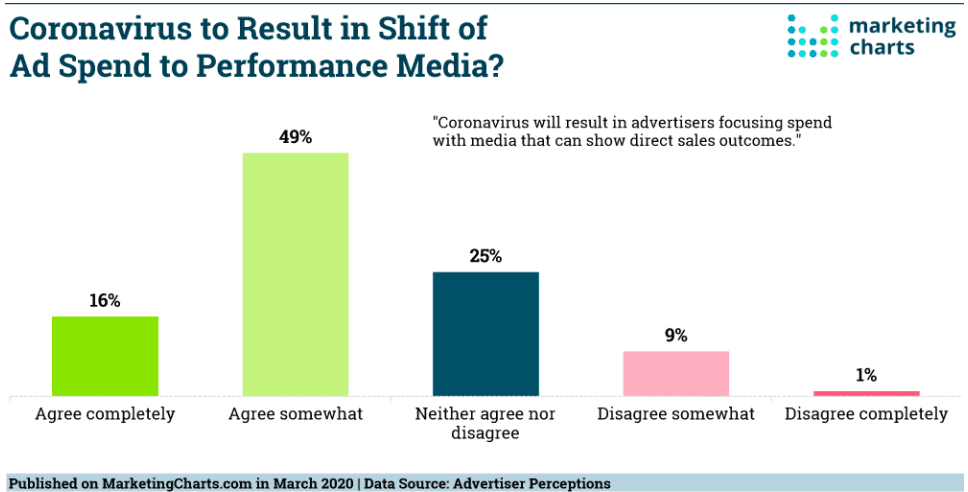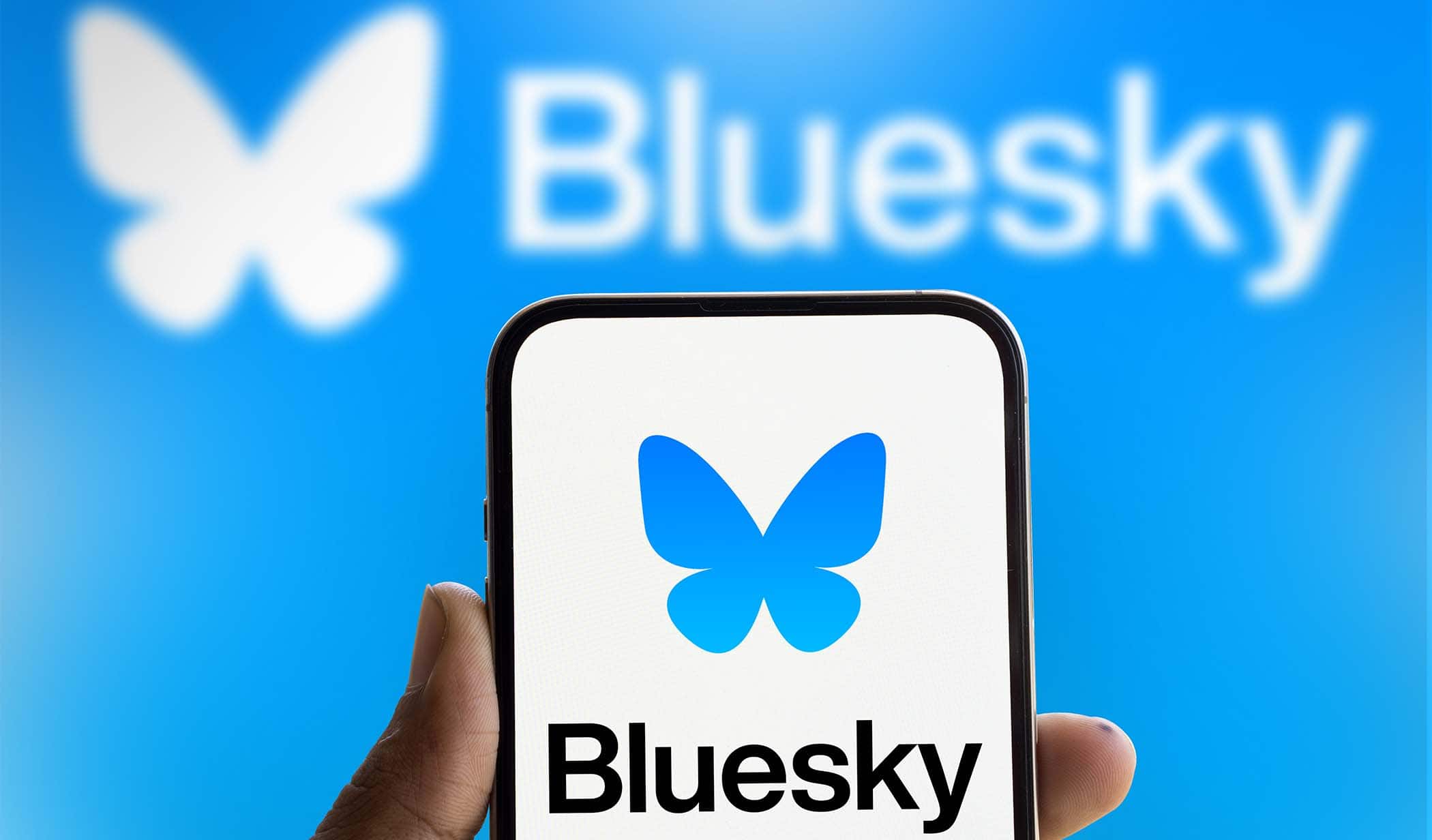5 Ways Coronavirus Has Changed Media: Performance Marketing Takes Center Stage
This week, we’re looking back at the almost five months since the WHO declared the COVID-19 outbreak a global pandemic on March 11, 2020. So much has changed. There are still more questions than answers. And several trends have emerged that have helped us understand how the coronavirus has changed media, how the coronavirus has changed consumer behavior, and how the coronavirus has changed real estate.
Performance Marketing Takes Center Stage
We’ve already talked about how digital first is finally here, the benefits of programmatic audio, and why direct mail for real estate may make sense, especially when done in conjunction with targeted digital advertising. We also dove into the challenges TV ad buyers are facing and the resulting shift to more flexible media buying. Today, we’re going to end our series by looking at performance marketing and its appeal during the “COVID-era”.
Degrees of Measurability
Before we dive into what performance marketing is and why it’s taking center stage in many companies’ current media plans, let’s look back at the roots of marketing performance – measuring ad effectiveness.
All media can be measured. Traditional media is typically measured by reach – circulation for print, gross rating points (GRPs) and total rating points (TRPs) for TV and radio, and impressions for out of home (OOH). There are other metrics like Cume, TSL (time spent listening), and AQH (average quarter-hour persons) for radio, as well as household ratings for TV, which all essentially measure the number of people out of your total target audience that your ad reached, and sometimes, for how long they engaged with your content. GRPs, as one example, are impressions as a percentage of the target population – so a show reaching 5% of your target audience would yield a 5 rating – the gross rating comes when you add up all the points from the various shows on which your ad appeared.
Traditional media is good at measuring reach. But what about measuring the impact ads had on actual behavior? Did the consumer interact with the ad? Did they do anything differently after seeing the ad?
Entire industries have sprung up around advertising measurement and trust in measurement – it’s always been important for advertisers to know that their ad ran when it was supposed to run in front of the people it was supposed to run in front of. Then it became important to know what, if anything, those people did differently. From companies like Nielsen paying groups of people to track their shopping habits and place measurement devices in their homes (literal boxes on their TVs) to companies like Acxiom and LiveRamp from whom you can buy massive amounts of data like credit card data and integrate it into your marketing to understand when purchases occur, understanding the effectiveness of various forms of advertising on influencing changes in consumer behavior is the ultimate goal. The allure of digital is that measuring that change in behavior is much quicker and cheaper – third party cookies, user IDs (typically tied to registration, subscription, and/or loyalty data), IP addresses, device data, and more enable better trackability – at its best on e-commerce sites – so advertisers can avoid commissioning expensive studies and/or relying on inaccurate self-reported behavioral changes to know whether their ads worked.
Advertisers Expect More
Performance marketing refers to online marketing and advertising where the advertiser only pays when a specific action is completed, such as a click, a form submission/lead capture, or a sale/order completion. Instead of paying for ads and hoping they work, you pay for the result, so you know the ad worked. As the advertiser, you can specify the action the user has to take and technology exists today to modify bidding strategies, targeting strategies, and even creative for the result you’re trying to achieve, whether a click, video view, lead capture, social share, or more.
Performance marketing is highly appealing to CFOs and was often necessary for businesses with small budgets, even before COVID-19. Then sheltering in place began and business-as-usual ground to a halt. A recent Search Engine Watch survey showed that after COVID-19 hit, 63% of the thousands of participants surveyed reallocated budgets to activities that would bring results in the short term. And 65% of executive-level marketers said the coronavirus would result in focusing spend on media that could demonstrate direct sales outcomes. In fact, research from Advertisers Perceptions indicated that while all media have seen reductions in ad spend during the pandemic, paid search is the channel for which the largest share (24%) of advertisers are retaining or even increasing budgets.

As the World Economic Forum summarized, “The pandemic has caused advertisers of all sizes to rethink the type of campaigns they should run. For many, this means focusing spending”. Even traditionally brand-centric lifestyle advertisers have reported that “acquiring customers is now their priority.”
At Union Street Media, we’ve been measuring and optimizing our clients’ advertising for cost per click, cost per lead, and overall ROI key performance indicators for years, and we’re excited to see Google leading the way in introducing new attribution models that will more accurately reflect the impact being exposed to online advertising has on consumers at different stages of their decision making and across different channels. We believe in the power of digital marketing, though as we’ve previously written about, there are opportunities for real estate brokers and agents to stand out on non-digital channels as well. We also believe in consistently delivering our customers more value for the same ad spend, coronavirus or not. That’s one reason our clients’ cost per lead dropped by an average of 38% in Q2 vs. Q1.
We’d love to hear how you’ve incorporated performance marketing into your marketing mix and how else you’ve adapted your marketing strategy because of the coronavirus. Stay safe and be well.
This post is the final part of a five-part series that highlights how Coronavirus has changed media.
Read Part 1: Digital First is Finally Here
Read Part 2: Programmatic Audio’s Heyday
Read Part 3: The Direct Mail Opportunity
Read Part 4: Media Buying Becomes more Flexible










